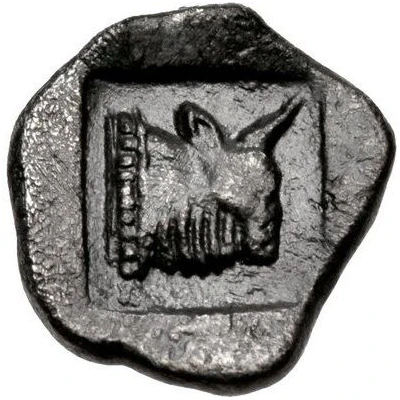


© Classical Numismatic Group, Inc.
Hemiobol 499 BC - 495 BC
| Silver | 0.33 g | 8 mm |
| Issuer | Samos (Ionia) |
|---|---|
| Type | Standard circulation coin |
| Years | 499 BC - 495 BC |
| Value | ½ Obol (1⁄12) |
| Currency | Drachm |
| Composition | Silver |
| Weight | 0.33 g |
| Diameter | 8 mm |
| Shape | Round (irregular) |
| Technique | Hammered, Incuse |
| Demonetized | Yes |
| Updated | 2024-10-10 |
| Numista | N#391958 |
|---|---|
| Rarity index | 100% |
Reverse
Head of ox right.
Interesting fact
The Hemiobol coin was used as a form of currency in ancient Greece, specifically in the city-state of Samos (Ionia) during the 5th century BC. The coin's design features the image of a scallop shell on one side and an incuse punch on the other, which was used to validate its authenticity. Despite its small size and relatively low value, the Hemiobol was an important part of the ancient Greek economy, as it facilitated trade and commerce within the region.